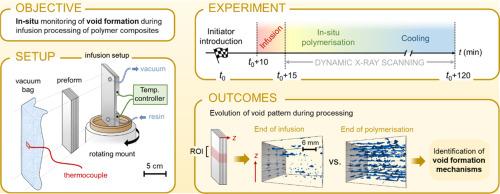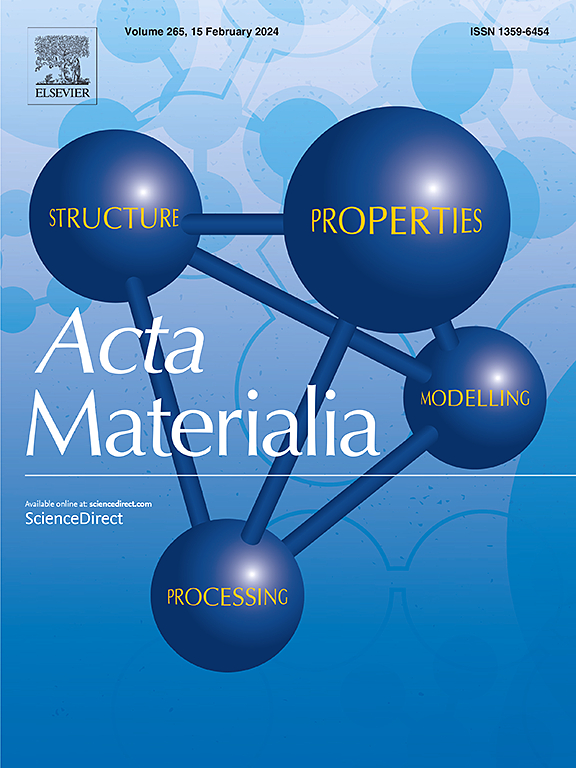4D-XCT 监测灌注法生产的厚甲基丙烯酸酯复合材料中的空隙形成
IF 8.3
1区 材料科学
Q1 MATERIALS SCIENCE, MULTIDISCIPLINARY
引用次数: 0
摘要
纤维增强聚合物复合材料在液态模塑加工过程中形成的空洞是复合材料研发中的一个老大难问题。不仅可能有多种空洞形成机制,而且这些缺陷还可能在制造过程中不断累积和扩大。一旦确定了空洞形成的根本原因,就可以采用缓解方法,但这是无法通过死后表征来实现的。在此,我们利用实验室 X 射线计算机断层扫描 (XCT) 技术,对通过真空灌注和原位聚合制造的微型玻璃纤维增强热塑性聚合物复合材料样品的空洞形成进行动态监测。这种方法可以描述树脂在纤维预型件内聚合和冷却时空隙形态的演变。这种首创的 XCT 实验时间分辨率为 2 分钟,体素尺寸接近 20 微米,可以深入了解空隙体积分数、空隙尺寸和位置的演变情况。成功确定了导致相关系统中空隙形成的根本原因,包括预成型填充过程中与流动相关的空气夹带,以及聚合过程中基体的化学收缩。此外,预成型冷却过程中的热收缩也会导致最终空隙体积分数略有下降。本文章由计算机程序翻译,如有差异,请以英文原文为准。

4D-XCT monitoring of void formation in thick methacrylic composites produced by infusion
Void formation in fibre-reinforced polymer composites processed by liquid moulding is a persistent issue in composite research and development. Not only may several void formation mechanisms come into play, but these defects can also accumulate and grow over the course of the manufacturing process. Mitigation methods can be applied once the underlying causes of voiding are identified, which is impossible through post-mortem characterisation. Here, void formation is dynamically monitored in miniaturised glass fibre-reinforced thermoplastic polymer composite samples manufactured by vacuum infusion and in-situ polymerisation, using laboratory-based X-ray computed tomography (XCT). The method allows the characterisation of the evolution of void patterns as the resin polymerises and cools down within the fibre preform. With a time resolution of 2 minutes and a voxel size close to 20 µm, this first-of-a-kind XCT experiment provides insights into the evolution of the void volume fraction, void size and location. The root causes leading to void formation in the system of interest were successfully identified as a combination of flow-related air entrapment during preform filling and, mostly, of chemical shrinkage of the matrix upon polymerisation. Additionally, thermal shrinkage during the cooling of the preform results in a slight decrease in the final void volume fraction.
求助全文
通过发布文献求助,成功后即可免费获取论文全文。
去求助
来源期刊

Acta Materialia
工程技术-材料科学:综合
CiteScore
16.10
自引率
8.50%
发文量
801
审稿时长
53 days
期刊介绍:
Acta Materialia serves as a platform for publishing full-length, original papers and commissioned overviews that contribute to a profound understanding of the correlation between the processing, structure, and properties of inorganic materials. The journal seeks papers with high impact potential or those that significantly propel the field forward. The scope includes the atomic and molecular arrangements, chemical and electronic structures, and microstructure of materials, focusing on their mechanical or functional behavior across all length scales, including nanostructures.
 求助内容:
求助内容: 应助结果提醒方式:
应助结果提醒方式:


